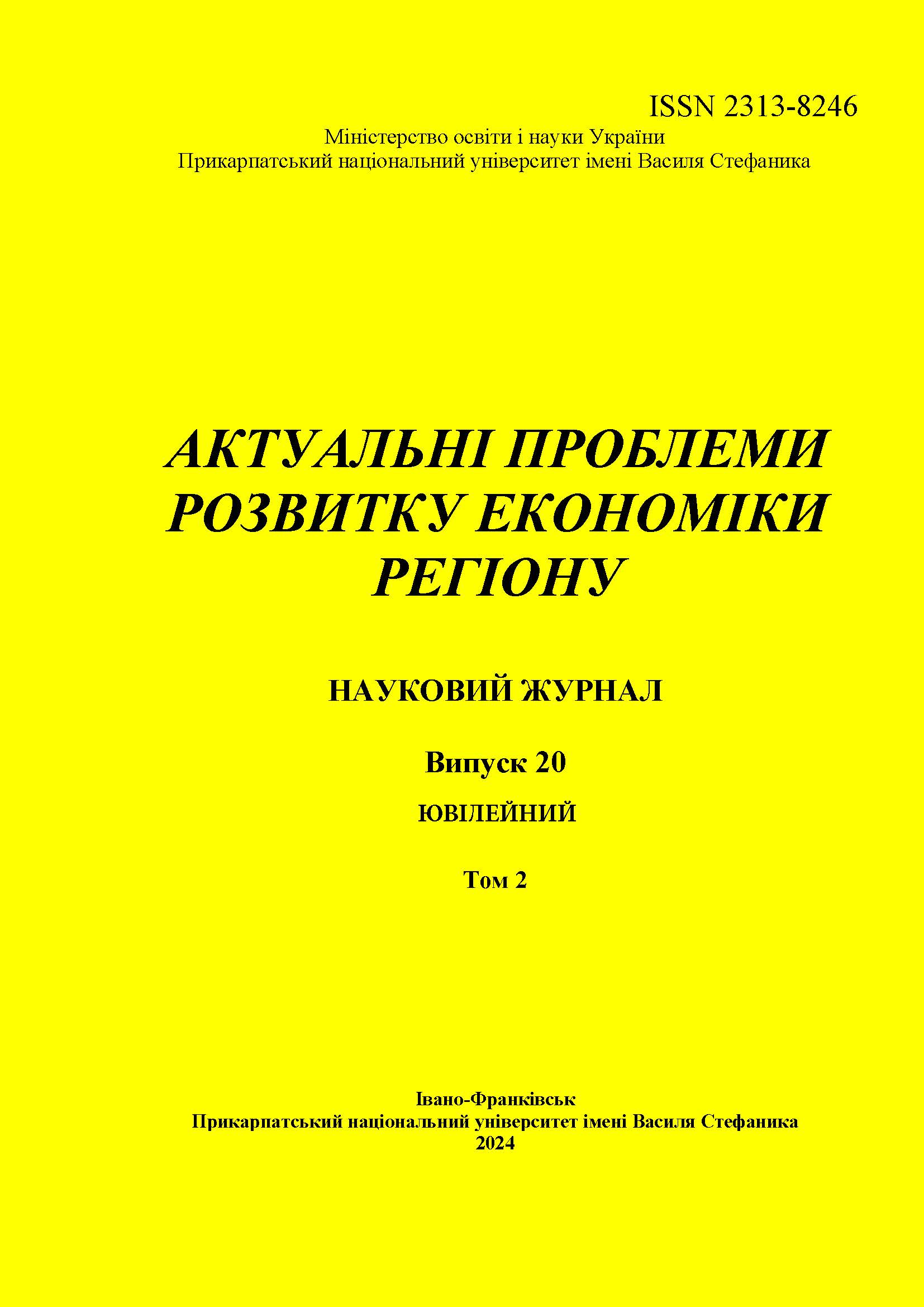PAYMENT FOR WORK IN THE ACCOUNTING AND ANALYTICAL INFORMATION SYSTEM OF BUSINESS ENTITIES
DOI:
https://doi.org/10.15330/apred.2.20.379-387Keywords:
accounting-analytical support, depreciation, depreciation policy, system, accounting, analysisAbstract
The article is aimed at studying the issues of formation of accounting and analytical information in the management of the efficiency of the use of the wage fund at the enterprise. The content of the concept of "salary" is characterized. It was determined that the amount of wages is determined by the complexity and conditions of the work performed, the professional and business qualities of the employee, the results of work and economic activity of the organization. The following elements of the fund were considered: basic salary fund, additional salary fund, other incentive and compensatory payments, as well as components of employee payments: wages according to salaries and tariffs, other salary allowances; payment of unworked time (annual leave and other paid unworked time); bonuses and other incentive payments paid to employees within twelve months after the start of the relevant period of employment.
It was determined that the salary structure consists of the main parts of the salary, additional parts of the salary and other compensatory and incentive parts, which are organized and related to each other in a certain way. This salary breakdown is limited to basic, additional, other remuneration and incentive payments. The clarity of the definition of the components of the salary structure, the reliability and stability of receiving all payments are extremely important today, which means that a high level of financial support for each employee should lead to success and contribute to economic growth. Payroll is one of the key components of the accounting and analytical information system of any business entity. It reflects the economic relationship between the employer and the employee and includes all types of wages, bonuses, allowances and compensations that employees receive for the performance of labor duties. Wages are regulated by labor legislation, which establishes minimum guarantees regarding the level of wages, conditions for its payment, as well as norms of working hours and rest. Payroll accounting includes primary accounting: recording of time worked, work performed and calculation of wages, analytical accounting: keeping wage accounting cards for each employee, synthetic accounting: summarizing information about the calculation and payment of wages in accounting accounts.
The system of accounting and analytical information of economic entities should ensure accurate and timely accounting of labor remuneration. This contributes not only to the fulfillment of legal requirements, but also to the improvement of personnel management, increasing the motivation of employees and the efficiency of the enterprise as a whole.
References
National Standard of Accounting (NSA) 26 “ Payments to employees ” dated November 10, 1995, № 108/95-ВР. Verkhovna Rada of Ukraine, zakon.rada.gov.ua/laws/show/z0288-00#Text. Accessed 15 April 2024.
Law of Ukraine «On payment of labor» dated March 25, 2003, № 1025/8346. Verkhovna Rada of Ukraine, zakon.rada.gov.ua/laws/show/108/95-%D0%B2%D1%80#Text. Accessed 15 April 2024.
Bardadym, M. V. “Applied aspects of accounting and management of labor costs at a manufacturing enterprise.” Efficient economy, no. 6, 2023, dspace.dsau.dp.ua/handle/123456789/9254. Accessed 15 April 2024.
Berezhnyak, V. D. “Problematic issues of the wage fund and its structure.” The IV International Science Conference «Problems of practice, science and ways to solve them», October 11 - 13, Milan, Italy, 2021, pp. 69–75.
Kosyak, A. P., and I. V. Ryabikh. “Business process of formation of accounting and analytical information of the wage fund of workers employed in sugar production.” ojs.kname, ojs.kname.edu.ua/index.php/area/article/view/1937/1837. Accessed 15 April 2024.
Mardus, N. Y. “Peculiarities of accounting and auditing of labor and wages at the enterprise.” Economy and society, no. 5, 2016, pp. 431–436.
Plastun, N. I. Visual guide for students of cooperative colleges. Specialty: 071 Accounting and taxation. Kyiv, NMC «Ukooposvita», 2020.
Shulginova, L. A. “Scientific and theoretical aspects of wage regulation.” State construction, no. 2, 2011, pp.34–47.
Yaremenko, L. M. “The mechanism of formation of the wage fund and directions for its improvement.” Agroworld, no. 2, 2020, pp.53–60.
Downloads
Published
Issue
Section
License

This work is licensed under a Creative Commons Attribution-NonCommercial-NoDerivatives 4.0 International License.
- Authors retain copyright and grant the journal right of first publication with the work simultaneously licensed under a Creative Commons Attribution NonCommercial NoDerivs 4.0 Unported License that allows others to share the work with an acknowledgement of the work's authorship and initial publication in this journal.
- Authors are able to enter into separate, additional contractual arrangements for the non-exclusive distribution of the journal's published version of the work (e.g., post it to an institutional repository or publish it in a book), with an acknowledgement of its initial publication in this journal.
- Authors are permitted and encouraged to post their work online (e.g., in institutional repositories or on their website) prior to and during the submission process, as it can lead to productive exchanges, as well as earlier and greater citation of published work (See The Effect of Open Access)


